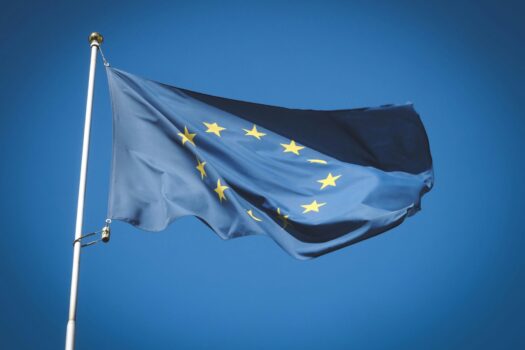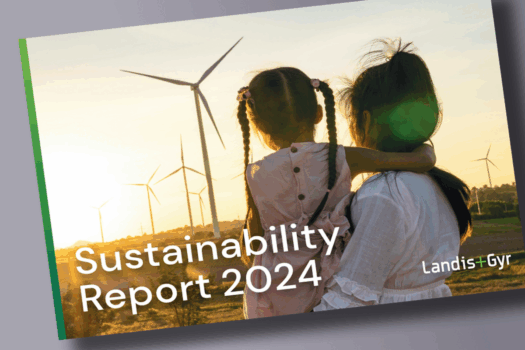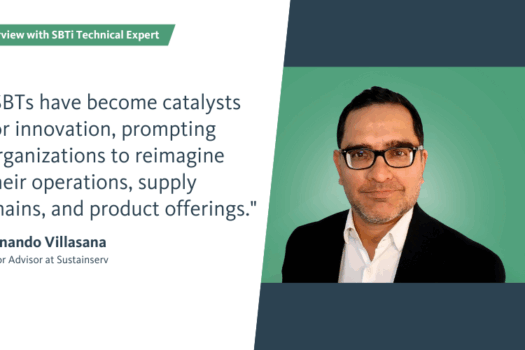As we move into the new decade of the 2020’s, many companies are drafting budgets and setting goals for the coming year and the coming decade. From our close watch on all things sustainable – our client work, our speaking engagements, and major publications, we begin to see things emerge as key issues and subjects to look for in 2020. Here is our take on the top nine things in sustainability to look for in the coming year:
9. Science Based Targets Continue to Gain Steam
As of today, 732 companies have signed on to the Science Based Targets Initiative (SBTi) with 312companies having approved science-based targets. This is a great achievement of the joint project sponsored by CDP, World Resources Institute, WWF, and the United Nations. But there are over 45,000 large corporations in the world, meaning just over 1% of the world’s largest companies have signed on. There is still a long way to go.
But we see the progress continuing as more pressure continues to build externally by activists like Greta Thunberg and internally by investors looking to fully assess the risks and opportunities embedded in the web of ESG issues of companies that they look to put their money into.
8. Goal Setting Moves Beyond the Minimum
Science-based targets are associated with carbon emissions. And generally, science underpins most of the issues within the “E” of ESG (Environmental, Social, Governance). However, on the social side, “ethics based” and “purpose based” goals are emerging onto companies’ radars. These social metrics also have thresholds, ethical thresholds, that companies can strive for – e.g. 50% board gender diversity.
Companies are looking to consultants, like us, and to leading frameworks like the Future Fit Business Benchmark and the Center for Sustainable Organizations to identify, assess, quantify and goal set for the various science and ethics based thresholds.
7. Competitive Goal Setting Begins to Emerge
Most companies are still fairly conservative when it comes to addressing energy, emissions, water, waste, etc. Over the years we have seen a step-wise progression regarding goal setting: from incremental goals (1-5% reductions), to more significant incremental reductions (20-30%), to more aggressive science-based goals, e.g. 80% emissions reductions by 2050.
Now that science-based goal setting has reached the mainstream with dozens and hundreds of companies joining the fray, we expect companies to now venture into the land of “net positive”…and to make it competitive. For example, if one major player in an industry, for example, “goes double” and takes on its full inventory of emissions times two, then it could publicly state, “not only are we taking on our own emissions here at Company X, we are taking on our major competitor, Company Y’s, emissions.”
Now that would catch some attention.
6. The Risk of Being the Next Climate Casualty Spreads
The summer of 2018 brought with it more climate-related bad news: increased rates of meting of glaciers and polar caps, water shortages that threaten large population centers and more frequent and intense storms. We were particularly struck by the tragic wildfires around the globe, and across the state of California. The fires devastated tens of thousands of acres, thousands of homes, hundreds of communities, and one S&P 500 firm: Pacific Gas & Electric.
As Forbes reported in early 2019:
PG&E, a regulated utility that serves roughly 5.2 million households in central and northern California – was preparing to file for bankruptcy protection due to “potentially crushing” liabilities stemming from its equipment’s role in starting several of the enormously destructive fires of summer 2018. Thus, becoming arguably the first bankruptcy of an S&P 500 firm due to the effects of global warming. From our perspective, we are seeing many major companies taking notice and are understandably very concerned. Thus, we see 2020 showing a major increase in climate risk, resilience, and adaptation plans. No company wants to be #2 to PG&E.
5. Crowd Sourcing Solutions: Next Gen Cup Challenge and Multi-company Collaborations
Over half a trillion single use beverage cups go into the waste stream every year. On these vessels are the logos of many large companies, a few of which (Coca-Cola, Starbucks, McDonalds) stepped up in the past year to address the issue by hosting the Next Gen Cup Challenge. The challenge was posed as a crowd source competition, with winners receiving grant money to move on to the beta testing stage. The twelve winners were announced at GreenBiz19 in Phoenix. Eight of the winners focused on recyclable/compostable cup liners, three submitted reusable cup service models, and one presented a new biodegradable material.
But the real winner here is the consumer and the planet. When competing (or somewhat competing) brands jointogether to solve a value chain problem openly, transparently, and collaboratively, then the shared problem gets solved much faster.
We see this example as a positive role model and harbinger of more things similar to come. It is an invitation to other companies to join in the mix and collaborate with other players, even competitors, across and within their value chain to solve collective business and societal challenges.
4. Sustainability Reports begin to move away from PDF
In a recent review of the Global Fortune 250, the Pivot Goals project, which tracks the ESG goals of the world’s largest and leading companies, it was found that nearly 95% of these companies had some form of sustainability report and/or website that communicated its sustainability program and data.
Reporting has become table stakes for a sustainability program and most companies make reporting an annual endeavor. And nearly all of them do the same thing – create a PDF sustainability report that can be downloaded from the website and contains 50-200 pages of typical ESG data, prose, and pictures. We know this from working with clients on over 300 sustainability reports dating back to 2004. Seeing Patagonia’s 2018 sustainability report in video form triggered our belief that big change, a disruption, is on the near horizon for sustainability reporting. It is coming in the form of virtual and augmented reality that can and will be used to tell company’s sustainability stories for marketing, brand development, sales, and stakeholder engagement.
As such, we have partnered with the technology-marketing firm, Anode, based in Nashville, Tennessee, to help clients develop VR/AR forms of their sustainability report for the purpose of viscerally telling their sustainability story to their interested stakeholders.
3. Materiality Assessments and Multi-Scenario based Modeling
We have all seen the results of the standard sustainability materiality process: the four quadrant box that shows various ESG issues scored by both their impact on internal business value and on the external importance to stakeholders. This model has served us all well, but it is time to move to the next step, the next phase, in order to respond to the increasing pace and risk of various ESG risks, namely the environmental, societal, and financial impacts of climate change. Such issues are hard to predict in a linear and definitive manner, similar to projecting the path of a hurricane. You can model both, generate multiple scenarios, select the most probable or impactful and plan from there.
As such, we have begun offering this multi-Scenario based modeling as a service within our Materiality Assessment work. This data-driven, probabilistic approach is the wave of the future and we believe the time is now to get moving on it.
2. Purpose, Authenticity, Mindfulness expands into the Norm
The human brain contains 300 billion neurons and around 100 trillion connections. Our brain is the greatest computer ever created and it continues to evolve even as we age. It is constantly reorganizing itself and is adaptable to change, whether it’s physical or through life experience. It’s built for learning.
The left side of the brain is our linear, mathematical, and logical computer. It works in facts, sequences, and utilizes words and numbers. This is often considered our “work brain”. The right side of the brain is our rhythmic, intuitive, and holistic construct. It works in the arts, visualization, and utilizes feelings and senses. This side of the brain is normally eschewed at work, but maybe that is changing. With the rise in purpose-based goal setting, authenticity and mindfulness practice at work, the right brain is gaining prowess for its importance in business.
As such, we are developing a new corporate training program, Haven, that embraces the left brain/ right brain balance and intend to launch Haven Retreats in the latter half of 2020/early 2021.
1. Single Use Plastics issue continues to spread globally; a new Issue emerges
A single plastic straw stuck in a single turtle’s nasal cavity. That one image, one video was enough to lure over 40 million online viewers in and helped propagate the oceans plastic issue to go globally viral.
This past year has seen an onslaught of organizations from major companies to entire countries setting stringent plastic goals to all-out banning single use plastics. The announcements continue to build. A major shift on a previously mundane ESG issue occurred. Why? Because a human connection was made based on emotion. Most people know that there is a global ocean/trash issue but seeing it and feeling it through an innocent turtle help make the issue personal.
With the prevalence and proliferation of smart phone cameras and social media outlets connected to our phones, it is likely that another overlooked ESG issue will virally emerge to the global forefront in the next year… and going forward. Having an internal strategy/change management team, along with readied public relations/communications professionals aligned with the sustainability team is needed to be prepared for the next one. Are you ready?
Get in touch. We are happy to tell you more about it.





